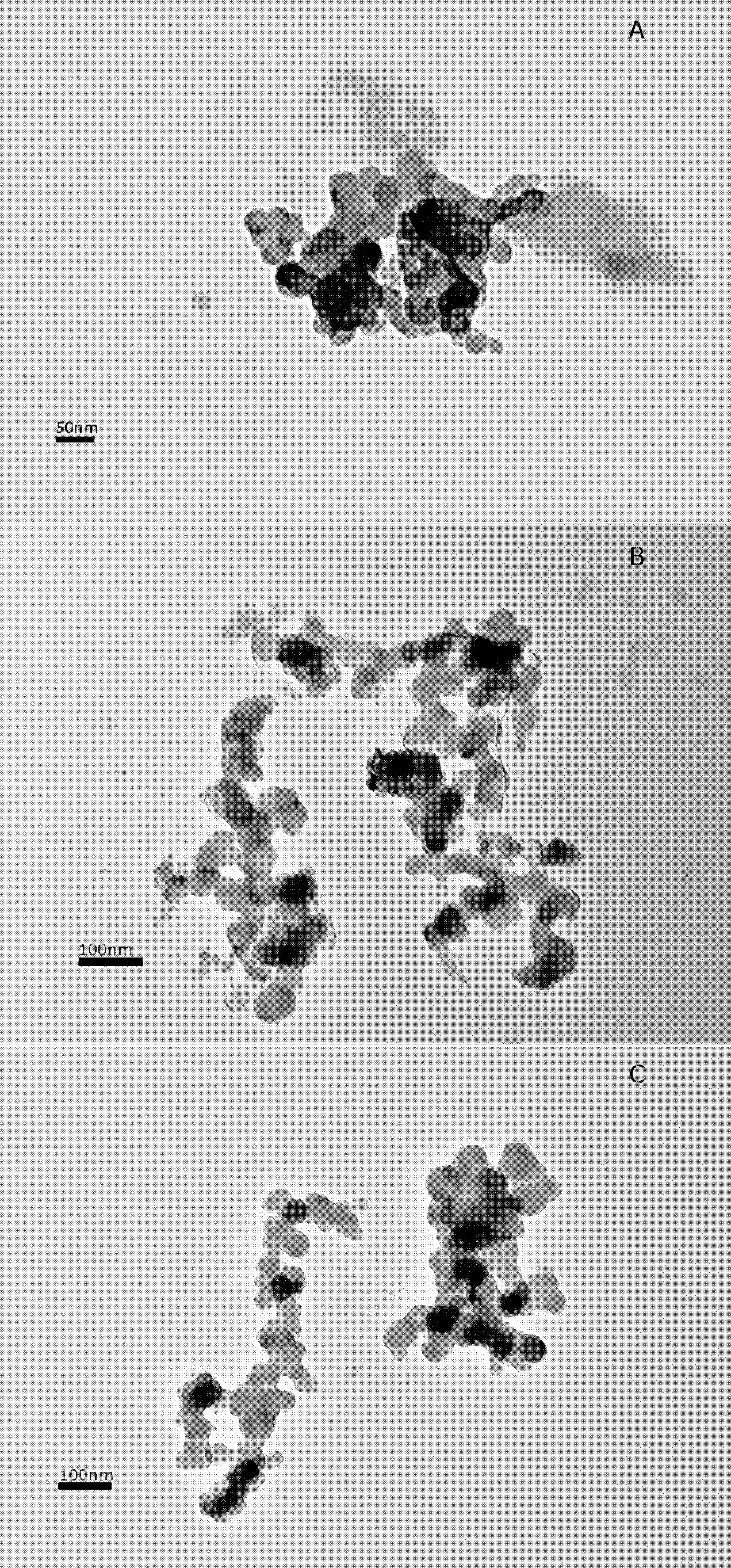Method for extracting soil nanoscale particles
An extraction method and nanoparticle technology, applied in the field of soil chemistry, can solve the problems of pollution, time extension, unfavorable natural nanoparticle research, etc., and achieve the effects of strong operability, reliable results, convenient preservation and subsequent research.
- Summary
- Abstract
- Description
- Claims
- Application Information
AI Technical Summary
Problems solved by technology
Method used
Image
Examples
Embodiment 1
[0043] Embodiment 1, a kind of extraction method of soil nano-scale particle, carries out following steps successively:
[0044] 1), choose suitable soil:
[0045] Choose black soil as suitable soil;
[0046] 2), pre-processing:
[0047] Air-dry the above-mentioned suitable soil to constant weight, remove gravel, cuttings and plant roots and other debris in the soil, and then crush and grind until it can pass through a 2mm sieve. Weigh 3 g of the sieved soil and place it in a 100 ml casing cooling cup, add 80 ml of distilled water to obtain a soil-water suspension.
[0048] Use a probe-type ultrasonic disperser to disperse the above-mentioned soil-water suspension. The ultrasonic probe is fixed at a place 2cm deep from the surface of the suspension. Ultrasonic dispersion, because a large amount of heat will be generated during the ultrasonic process, and the rapidly rising temperature will destroy the natural structure and components of the soil. Therefore, a casing cooling...
Embodiment 2
[0058] Select brown soil (replacing black soil) as suitable soil; All the other are exactly the same as embodiment 1.
[0059] Step 3) the soil nanoparticle solution of gained, after measuring: particle size distribution sees figure 2 -B, while observing the morphology of nanoparticles by transmission electron microscope, see image 3 -B.
[0060] From figure 2 -B and image 3 -B We can know that the particle size of the nanoparticles extracted from the brown soil is about 40nm.
[0061] Step 4) the agglomeration of the powdery soil nanoparticles obtained after freeze-drying, the morphology of the agglomerates observed in a scanning electron microscope is shown in Figure 4 -B, i.e., when freeze-dried, the nanoparticles aggregate into aggregates of about 5 μm. Therefore, it is judged that the form of its aggregation has exceeded the nanometer scale, and may not be able to show the proper size and surface properties of the nanoparticles. Therefore, it is recommended to s...
Embodiment 3
[0064] Select brick red soil (replacing black soil) as suitable soil; All the other are exactly the same as embodiment 1.
[0065] Step 3) the soil nanoparticle solution of gained, after measuring: particle size distribution sees figure 2 -C, while observing the morphology of nanoparticles by transmission electron microscopy, see image 3 -C.
[0066] From figure 2 -C and image 3 -C We can know that the particle size of the nanoparticles extracted from the brick red soil is about 45nm.
[0067] Step 4) the agglomeration of the powdery soil nanoparticles obtained after freeze-drying, the morphology of the agglomerates observed in a scanning electron microscope is shown in Figure 4 -C, that is, after freeze-drying, the nanoparticles will aggregate into flocculent aggregates of about 5 μm; therefore, it is judged that the aggregated form has exceeded the nanometer scale, and may not be able to show the proper size and surface properties of the nanoparticles, Therefore, i...
PUM
| Property | Measurement | Unit |
|---|---|---|
| Granularity | aaaaa | aaaaa |
| Granularity | aaaaa | aaaaa |
| Granularity | aaaaa | aaaaa |
Abstract
Description
Claims
Application Information
 Login to View More
Login to View More - R&D
- Intellectual Property
- Life Sciences
- Materials
- Tech Scout
- Unparalleled Data Quality
- Higher Quality Content
- 60% Fewer Hallucinations
Browse by: Latest US Patents, China's latest patents, Technical Efficacy Thesaurus, Application Domain, Technology Topic, Popular Technical Reports.
© 2025 PatSnap. All rights reserved.Legal|Privacy policy|Modern Slavery Act Transparency Statement|Sitemap|About US| Contact US: help@patsnap.com



